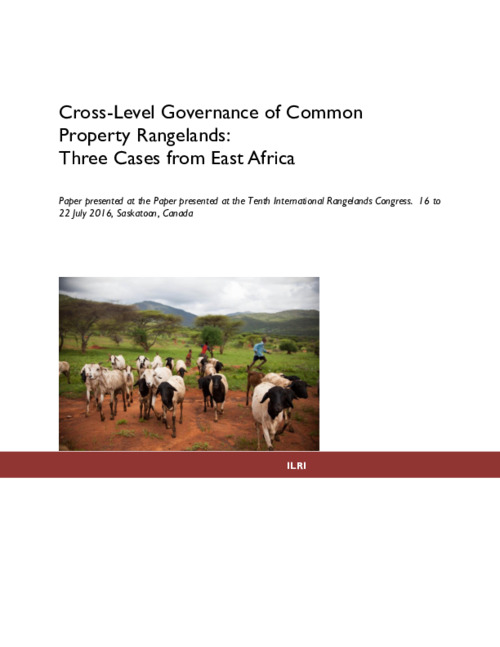Cross-Level Governance of Common Property Rangelands: Three Cases from East Africa
Abstract
Landscapes, like local commons, are embedded within larger watersheds, bioregions, and jurisdictions. The broader governance context is critical, because without its support, any mechanisms for management and governance at the landscape level may not be seen as legitimate by other communities and stakeholders. Moreover, the non-equilibrium dynamics of dryland ecosystems and the imperative for mobility provide an impetus “from the bottom up” against the strengthening or consolidation of governance powers, and against any neat resolution to the paradox of pastoral tenure.

For any initiatives aimed at strengthening governance powers of community-based mechanisms at a landscape level, a caution is in order. In dryland pastoralist settings, governance arrangements needed to foster effective management will not be a replication of local level commons only larger. Effective landscape level governance cannot be accomplished only through action at the landscape level; it is a task that must be pursued at multiple levels and in relation to the connections across scales and levels. Flluidity, negotiation and overlapping rights are likely to be key features of effective landscape governance arrangements for pastoralists

